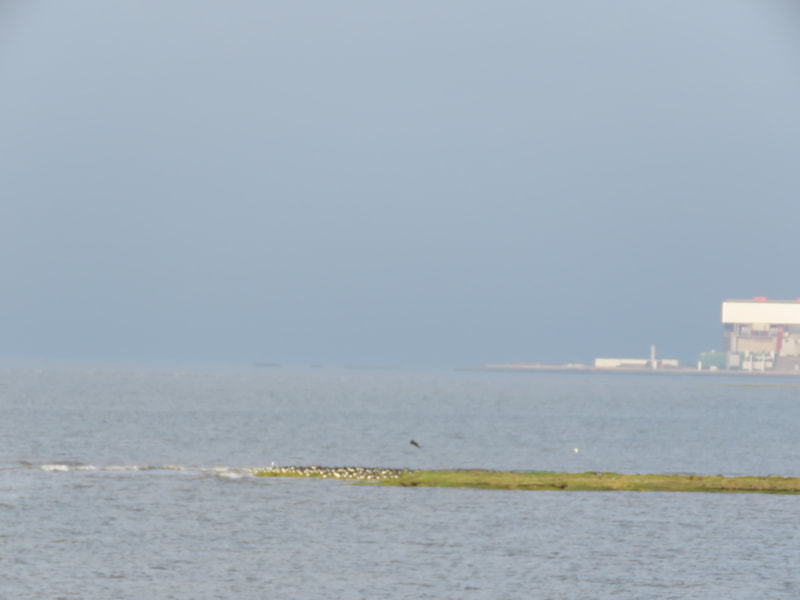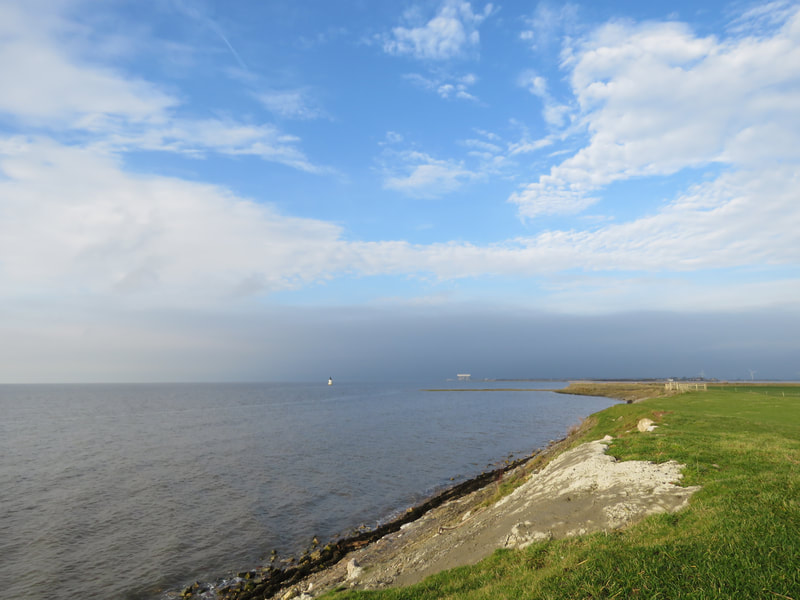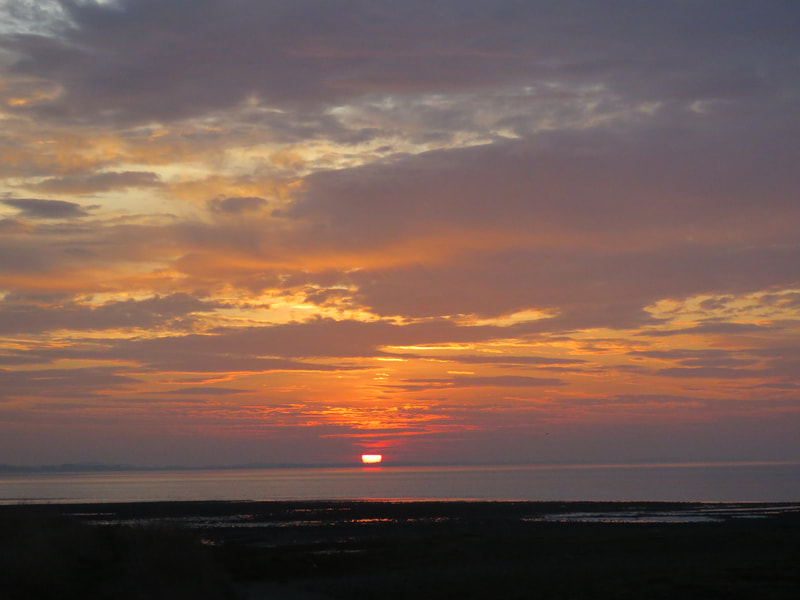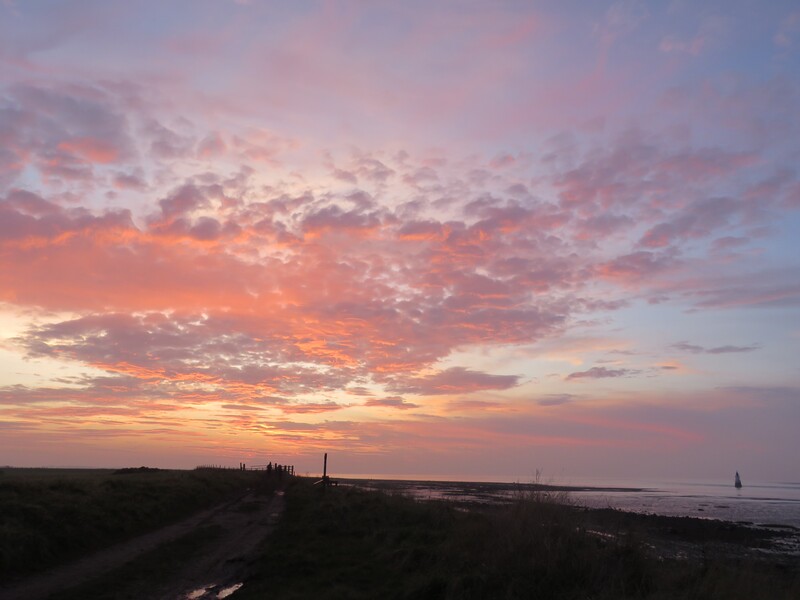 Lune Estuary sunset 29 December 2019
Lune Estuary sunset 29 December 2019 Glasson is the port for Lancaster. Grain now imported is mainly used for animal feed. Imported grain from Ireland, timber from the West Indies was used by Waring and Gillow whose furniture was re-exported to the USA. The first cotton bales coming to Glasson were ballast. With the realisation it could be spun it was sent to the Manchester cotton mills.
Cockersand was the mother abbey of Shap and one of the three richest abbeys in Lancashire. Dissolved in the second round of Henry V111 closures, with Mr Kitchen over-seeing the dissolution in 1539. The Dalton family acquired the land and buildings, renovating and reusing the Chapter House as their mausoleum . There were cloisters between the Chapter House and the sea. A perfect place for contemplation.
Masonry from the abbey was used in all the farms along the coast- the red sandstone we see below the sea wall. Farms are built on little clay islands, like Bank House Farm and Kendal Hill Farm. Cockersand Abbey would often have been an island itself and in medieval times it was known as Santa Maria de Marisco- Our Lady of the Marshes. There’s an account of an abbot of Shap requiring guidance through the marshes. Reaching the coast at the Lune Estuary we look down on tidal salt marsh threaded with inlets. The sea wall will keep out the tide that would once have flooded the salt marsh and channels about Bank House Farm indicate changes to hydrology Swans graze in pastures beyond the farm. We hope to find golden plover amongst the curlew and lapwing but the light is fading and it’s hard to be sure.
One night In March 2016 Plover Scar Lighthouse was struck by a cargo vessel bound for Glasson Dock. The impact caused substantial damage, destabilising the structure, necessitating a repair and reconstruction project for the 169 year old lighthouse. When we walked here on 27 December 2016 (see blog) Plover Scar Lighthouse was shrouded in scaffolding.
See blog 27 December 2016 for an earlier visit




























 RSS Feed
RSS Feed